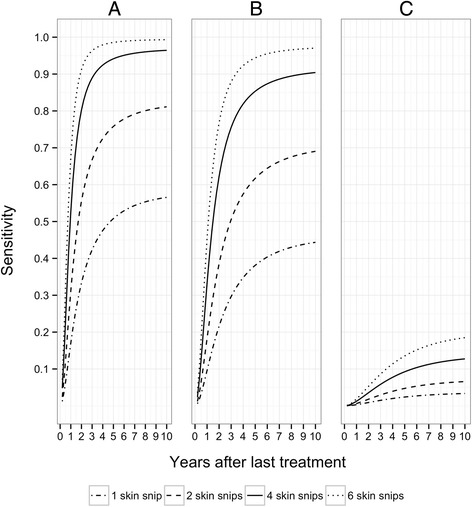Fig. 1.

Sensitivity of 1, 2, 4 and 6 skin snips (assuming a weight of 2 mg per snip) taken from an individual infected with a single, fertile female worm. Three scenarios are explored for the effect of ivermectin on microfilarial production: (a) microfilarial production by adult female worms is independent of the number of previous exposures to ivermectin (i.e. ζ=0 [43]); (b) each round of treatment reduces microfilarial production by 7 % (ζ=0.07 [54]); (c) each treatment round reduces production by 35 % (ζ=0.35 [55]). It is assumed that the worms have been exposed to 10 rounds of (annual) ivermectin treatment. Other parameter values are: microfilarial aggregation in the skin, k m = 0.42 (mean of the country-specific estimates for 1–10 adult female worms), pre-treatment microfilarial production per fertile female worm per mg of skin per year, ε* = 1.154 (estimate from [41]), microfilarial mortality per year μ m = 0.8 (estimate from [38, 39]), and resumption of microfilarial production per year ρ = 0.29 (estimate from [40, 42]). The dot-dash lines correspond to 1 snip; the dashed lines to 2 snips; the solid lines to 4 snips and the dotted lines to 6 snips
